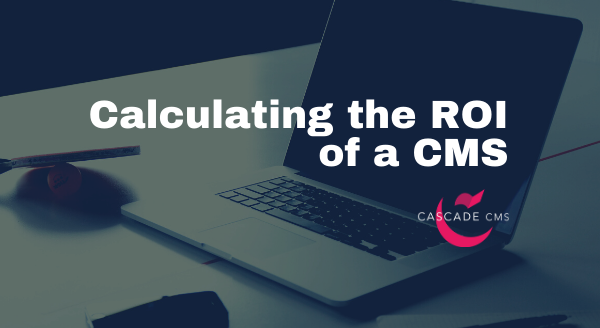
Choosing the right content management system for your business involves evaluating product functionality, the interface, support offerings, technical requirements, and more. What’s sometimes overlooked is forecasting the potential return on investment of a new solution.
If you need your boss to sign off on the purchase order for the right solution, being prepared with an ROI calculation will help justify the business expense and get ink on paper.
It’s important to note that this exercise is well suited for companies in the market for a new CMS, but it can be done at any time throughout your use of a product. In fact, three to five years post implementation has been named the sweet spot for calculating the ROI of a software purchase.
How a content management system can drive revenue
The primary way in which a CMS can help your organization generate revenue is by supporting valuable and interactive experiences with web visitors—ultimately leading to increased customer satisfaction, more leads, more applications, more donations, and so on.
The ways in which businesses generate revenue vary largely by vertical. Retailers invest heavily in the user experience to get customers to buy their products online. Consumer banks increase revenue by providing web experiences that encourage customers to do business with them. Auto manufacturers may use product configurators, product comparisons, and highly engaging multimedia tools to bring customers to the showroom.
The common factor is the visitor’s web experience. You will generate more revenue if your CMS supports healthy content that is relevant, ranked favorably with Google, region and language specific, accessible, and within brand guidelines.
Finally, it’s important to consider how your website or intranet can help build healthy relationships with existing stakeholders like students, partners, resellers, or current customers. Things like maintaining a dialogue, making a process easier, and offering special incentives can make a measurable financial impact.
How a content management system can decrease costs
According to Justifying Web Content Management: The Business Case and ROI, a white paper from Gilbane.com, the highest ROI on CMS investment tends to happen where development and user training costs have been slashed. Additionally, high ROIs also tend to take place when CMS development is done easily, with content rather than technical considerations being the primary driver.
There are several operational costs a CMS can help reduce. Axia Consulting shared a few tangible benefits of a successful implementation:
There are also a number of web development tasks that can either be augmented with a powerful CMS. Examples include:
Another consideration is the ability to utilize IT resources more strategically. Instead of involving IT in tasks like server maintenance, babysitting plugins, or authoring content, they can instead be available as strategic technical resources for departments throughout your organization.
Putting it all together to calculate ROI
First, it’s important to note that ROI calculations can be easily manipulated, so it’s best to stay as unbiased as possible and give careful attention to each line item.
Gilbane.com provides sample formulas for calculating two primary cost centers: site development and training costs. Use these figures in tandem with projected new revenue to calculate ROI.
ROI % = (Return - Cost of Investment) / Cost of Investment x 100
Image credit: Gilbane.com
Wrap Up
ROI considerations are important for any IT or Marketing project. To evaluate ROI, you need to understand how a new product might drive revenue and how it might decrease costs.
Start by identifying costs associated with the time required for developing web pages and templates, as well as the time it takes to train content authors. Work with your vendor to understand how these figures will change with effective use of their CMS, and how the product can help drive revenue.
If you’re careful and unbiased, ROI calculations can be a powerful way to justify a CMS investment.
Last Updated: Oct 7, 2020 11:00 AM